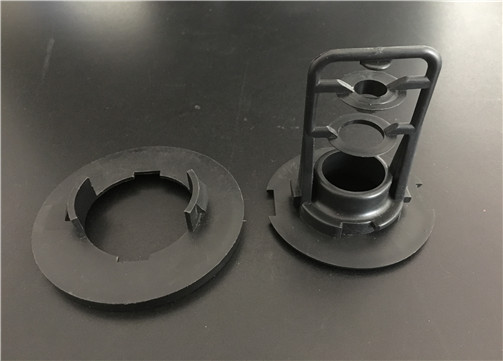A spray nozzle is a precision device that facilitates dispersion of liquid into a spray. Nozzles are used for three purposes: to distribute a liquid over an area, to increase liquid surface area, and create impact force on a solid surface. A wide variety of spray nozzle applications use a number of spray characteristics to describe the spray.
Spray nozzles can be categorized based on the energy input used to cause atomization, the breakup of the fluid into drops. Cooling tower spray nozzles can have one or more outlets; a multiple outlet nozzle is known as a compound nozzle.

Single-fluid nozzle
Single-fluid or hydraulic spray nozzles utilize the kinetic energy of the liquid to break it up into droplets. This most widely used type of spray nozzle is more energy efficient at producing surface area than most other types. As the fluid pressure increases, the flow through the nozzle increases, and the drop size decreases. Many configurations of single fluid nozzles are used depending on the spray characteristics desired.
Plain-orifice nozzle
The simplest single fluid nozzle is a plain orifice nozzle as shown in the diagram. This nozzle often produces little if any atomization, but directs the stream of liquid. If the pressure drop is high, at least 25 bars (2,500 kPa), the material is often finely atomized, as in a diesel injector. At lower pressures, this type of nozzle is often used for tank cleaning, either as a fixed position compound spray nozzle or as a rotary nozzle.
Shaped-orifice nozzle
The shaped orifice uses a hemispherical shaped inlet and a V notched outlet to cause the flow to spread out on the axis of the V notch. A flat fan spray results which is useful for many spray applications, such as spray painting.
Previous: New cooling tower fill
Next: Our tube settler project